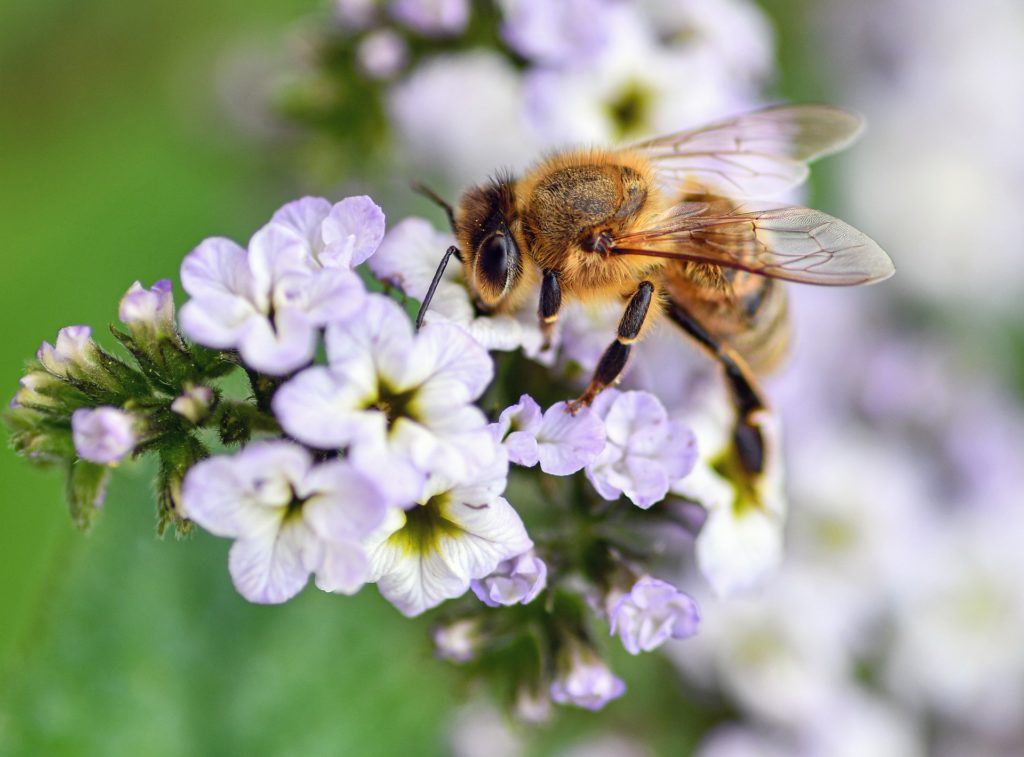No Mow May, the newest sustainability initiative for lawn care, is causing quite a buzz, and it’s not just because of the bees. With a mission to save millions of honeybees and other pollinators through the growth of natural wild flowers, No Mow May asks homeowners to do everyone’s favorite thing in the world: absolutely nothing.
Despite this seemingly simple task, No Mow May has seen some major pushback, especially during its inaugural year in Appleton, Wisconsin (a.k.a. “Bee City”) with city councils receiving complaints from non-participating residents about the unsightly eye-appeal and worsened breathing problems caused by the long grass and dandelion seeds.

These neighborhood complaints against the no mow movement in general are nothing new. In 2015, Sarah Baker wrote a guest post in the Chicago Tribune about her experience refusing to mow her lawn for ecological reasons. Local officials forced her to mow her lawn or face a $1,000 fine. They threatened to bring law officials under the local Ohio law that allowed governmental control over any vegetation deemed a nuisance on private property.
Beyond governmental pushback, Baker also faced cultural pushback as well. In her article, she writes,
“At first I felt guilty. The stigma that comes with the look of an unmowed lawn was hard to push through… But after we started explaining to people why we had stopped mowing, they were much less critical. If we allow ourselves to truly see what a mowed lawn for what it is—a green desert that provides no food or shelter for wildlife—we can recondition ourselves to take pride in not mowing.”
With that perspective, No Now May proponents encourage participants to see wild, unkempt lawns throughout the month of May as a point of pride rather than a point of contention—a contribution to restoring honeybees and other pollinators to their previous population sizes.
Honeybees, in particular, are crucial to human flourishing, aiding the production of about 90% of the world’s nutritional diet and resulting in agricultural services estimated at $14 million or greater in the U.S. and $215 billion worldwide. And yet, due to a mixture of habitat destruction, pesticides, global warming, and other causes, honeybees have been disappearing over the past 100 years, with the honeybee population declining more than 60% in the U.S. alone.
To combat this mass decline, Plantlife.org.uk founded the No Mow May movement, a campaign to encourage homeowners to mow less in order to save more.
The movement first began with Plantlife’s Every Flower Counts survey, the largest-ever survey focused on the plant life of lawns. From that survey, Plantlife discovered the Goldilocks of lawn maintenance: mowing once every four weeks for a pollinator’s paradise.
Their research found that four weeks allowed tall-grass species (such as oxeye daisy, red clover, field scabious, and knapweed) enough time to grow and bloom, while also boosting the nectar production of short-grass species (such as daisies, white clovers, and bird’s-foot trefoil), which produce new, nutrient-rich flowers quickly after being mowed down.
For best results, Plantlife’s Botanical Specialist, Dr. Trevor Dines, recommends mowing part of your lawn monthly, and leaving some patches completely unmowed to allow for even taller flowers to bloom.
Overall, these unmowed lawns tended to have a more diverse range of wild flowers and other nectar-rich plants, creating an environment perfect for pollinators to roam around and do what they do best: pollinate.
According to Sarah Baker, there are approximately 40.5 million acres of lawn in the United States, more than double the size of the country’s largest national forest. If one acre of wildflower meadow containing 3 million flowers can support nearly 96,000 honeybees per day, then those 40.5 million acres of lawn could support more than 3.8 million bees every single day in the U.S. alone. Imagine what that would look like if all the countries around the world took part as well.
No Mow May asks us to challenge our assumptions about lawn care and lawn aesthetics. While our current national lawn care routine may be a result of the 1950’s white-picket fence American Dream mentality, it may be time to replace that notion with something more relevant and environmentally-friendly for the 21st century.
For those interested in participating, Plantlife encourages placing a “Scaremow” on their yard as a sign of their participation in the project. More details about creating your own “Scaremow” and starting your own No Mow May project can be found here.
Related: How Caring For Indoor Plants Kept Me Calm In the Pandemonium Of 2020
Get more like this—Sign up for our daily inspirational newsletter for exclusive content!
__
Photo: Pixabay
